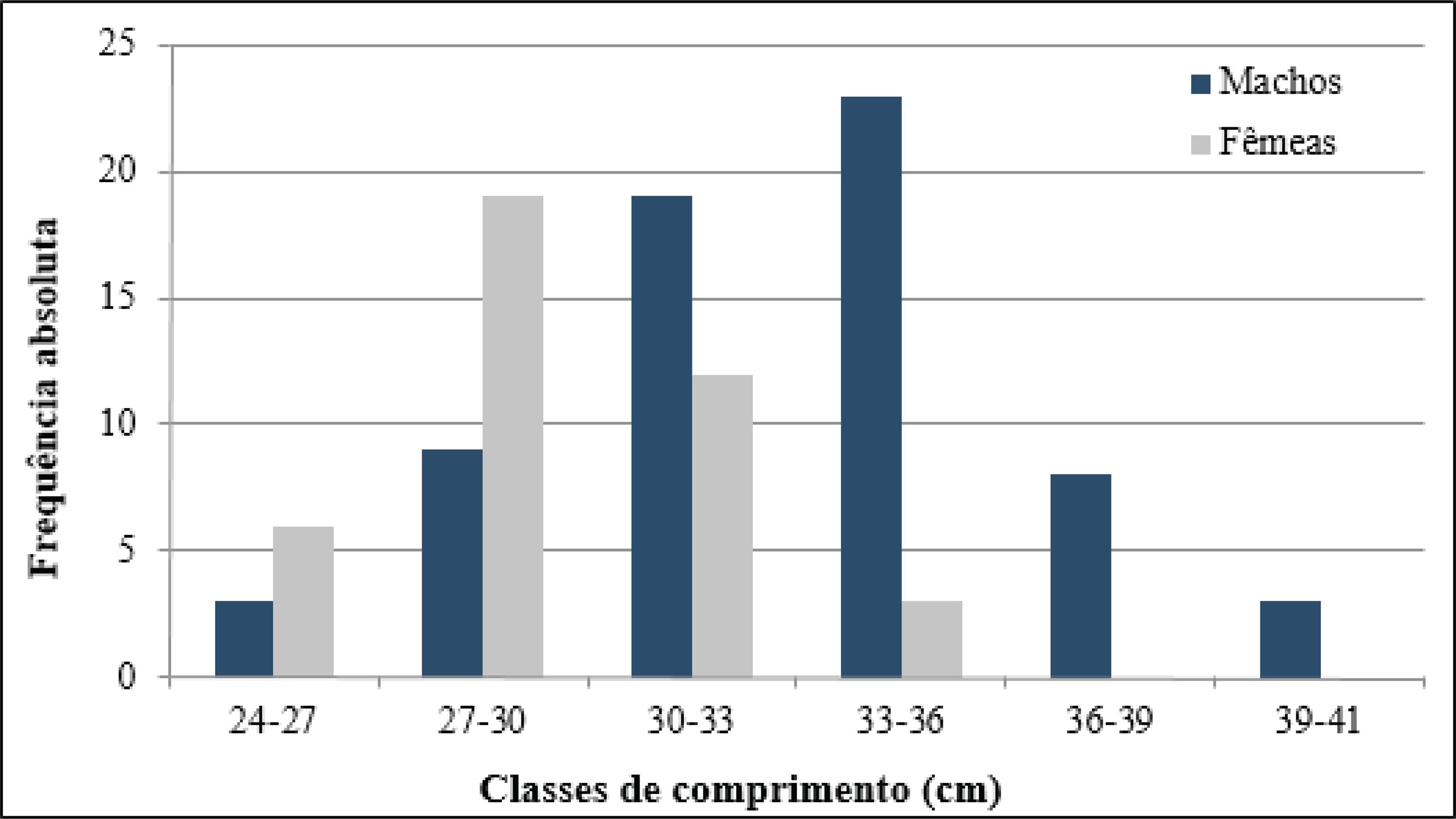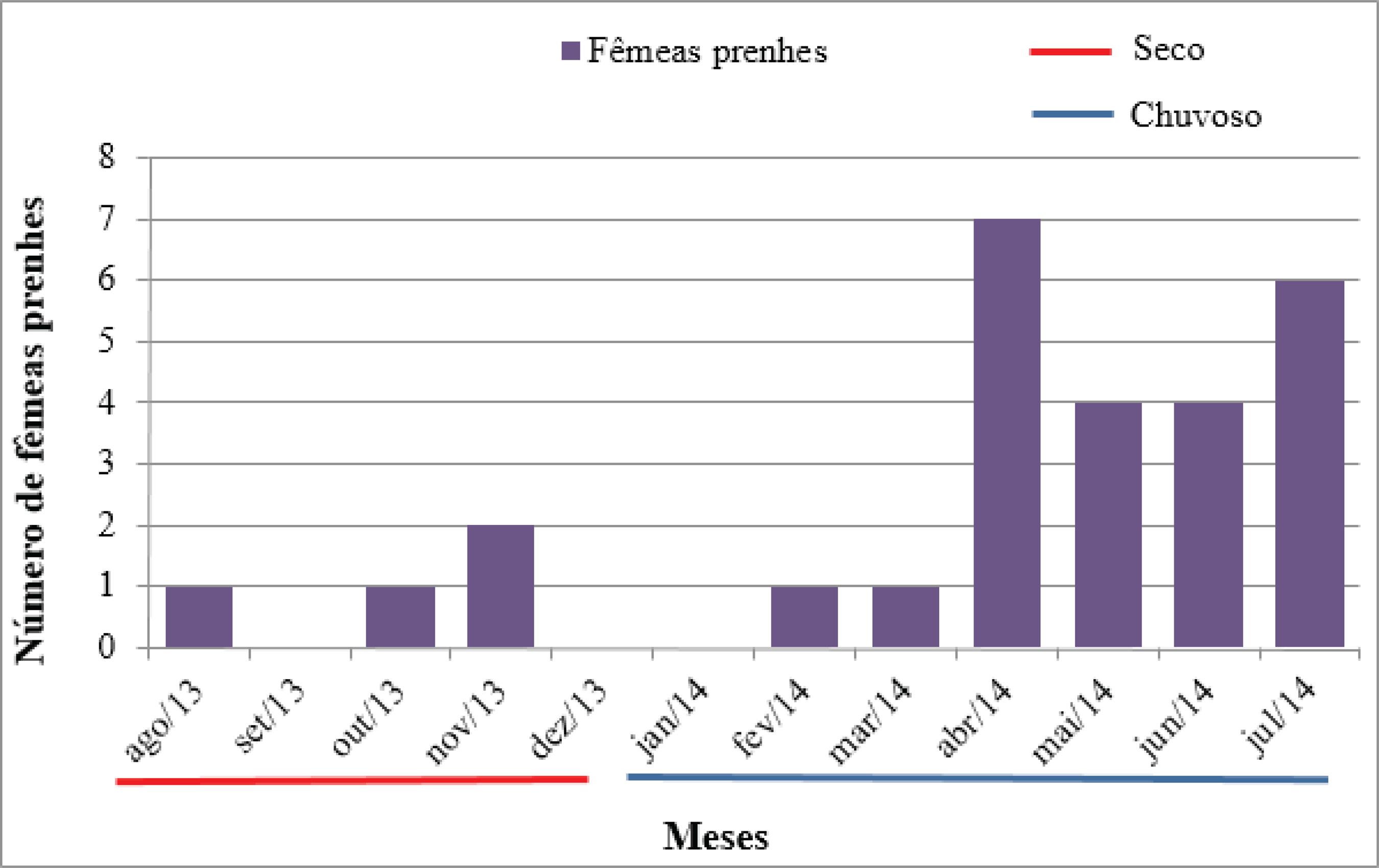Abstract
In the present study, we aimed to analyze the reproductive aspects (seasonal period and number of embryos) and positivity for S. mansoni in rodent of Holochilus gender, in São Bento - MA. For this, monthly captures of up to 10 Holochilus sp. rodents were conducted, randomly for sex, taking notes of the seasonal period of São Bento in each month of capture. At the laboratory, rodents had feces analyzed for S. mansoni infection by Kato-Katz method. After the analysis, they were adequately anesthetized for obtaining full length, weight and sex determination. In females, an incision of the ventral portion of the body was carried out to verify the presence of embryos and to count them. Among the captured rodents, there was male dominance in almost all months and they tended to be heavier and had larger bodies than the females. The animals showed high reproductive potential. The positivity for S. mansoni and the reproduction of Holochilus sp. were greater in the rainy season of São Bento. As for the number of embryos, we observed that, in the rainy season, more males were found than female. In short, the intense reproductive activity, along the susceptibility to S. mansoni presented by rodents are factors that help to maintain and aggravate schistosomiasis in Baixada Maranhense.
Keywords:
rodent; reproduction; Schistosoma mansoni



